In-Depth Review of the 2011 Subaru Outback Window Motor
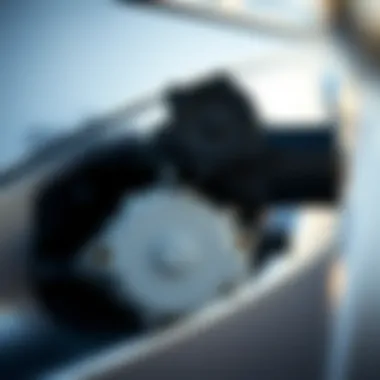

Intro
The 2011 Subaru Outback, known for its combination of ruggedness and reliability, has carved its niche in the automotive world. Among its many components that contribute to the driving experience is the driver side window motor. Though it may seem like a small piece in the grand puzzle of automotive engineering, understanding its function, potential issues, and repair methods is crucial for owners who want to maintain their vehicle’s functionality.
The driver side window motor plays a pivotal role in the seamless operation of the window system. When it fails, it not only hampers the convenience of operating the window but can also lead to more significant electrical system issues if not addressed. For both enthusiasts and casual users, getting to grips with the mechanics behind this component can save time and money, ensuring that they are prepared to tackle any challenges that may arise.
In the coming sections, we will dive deep into the technical aspects of this motor, exploring its specifications, common failings, and appropriate diagnostic methods. Armed with this knowledge, readers will be better equipped to handle repairs or consider replacements, ultimately leading to enhanced vehicle performance.
Overview of the Driver Side Window Motor
The driver side window motor plays a crucial role in the overall functionality and utility of the window system in the 2011 Subaru Outback. This sub-component of the vehicle's power window assembly not only facilitates the act of raising and lowering the window, but also serves as a reflection of the vehicle's engineering quality and design intentions. A deeper understanding of this component can unlock insights into both performance issues and methods of maintenance, which are particularly important for anyone looking to keep their Outback operating at peak capacity.
Basic Functionality of Window Motors
At its core, the window motor is an electrical device that transforms electrical energy from the vehicle’s battery into mechanical energy, allowing the window to operate smoothly. When the switch is activated, either by a button or a lever, the motor spins, engaging a series of gears that are connected to the window regulator. The window regulator is the mechanism that actually raises and lowers the window within its frame. This simple yet effective interaction means that when you press that button on your driver’s side door, you are triggering a complex series of actions that culminate in the movement of glass up or down.
The motor itself can vary in design. Some models utilize a direct-drive mechanism that connects the motor shaft directly to the window regulator, while others might have a cable-driven system where the motor drives a cable that moves the window. Regardless of the exact mechanism, the essential aim is the same: facilitate the smooth operation of the window.
Importance of Power Window Systems
Power windows are not merely a luxury feature; they fundamentally enhance the driver’s experience. Having the ability to control the windows with ease contributes to comfort, especially on long drives or during adverse weather. In addition, they provide a level of convenience that manual windows simply cannot match, such as quick operation from a distance or while seated in the car. Moreover, power windows are often integrated with modern safety features, such as pinch protection systems that prevent accidental injury by automatically stopping the window's movement if an obstruction is detected.
The driver side window motor is an underrated hero in automotive design, critical for comfort and utility in everyday driving.
In terms of maintenance, a well-functioning power window system promotes overall vehicle integrity. A malfunctioning window motor or regulator can lead to issues that might not only inhibit window usage but can also compromise the security of the vehicle. Moreover, given the increased reliance on electronic systems in modern vehicles, understanding how the driver side window motor fits into the broader framework of the automobile's electrical system is invaluable for troubleshooting and repairs. As we delve deeper into the specifics of the 2011 Subaru Outback's driver side window motor, we'll explore various components, common failures, and diagnostic strategies to ensure that this system remains reliable.
Subaru Outback Specifications
When diving into the specifics of the 2011 Subaru Outback, it's clear that these specifications create the foundation for understanding the driver side window motor and its functionalities. Knowing the specs not only helps in grasping how the window motor works but also aids in troubleshooting and assessing the overall performance of the vehicle. The dimensions, features, and configurations contribute to the interplay between the window systems and the car’s electrical architecture. Understanding these elements is crucial for enthusiasts and professionals alike, as even the smallest spec can impact how the window motor behaves.
Vehicle Dimensions and Configuration
The 2011 Subaru Outback comes equipped with dimensions that resonate well with the needs of various drivers. The overall length is about 15 feet, coupled with a width close to 6 feet, and a slightly elevated height of around 5 feet. This configuration delivers ample headroom and cargo space without compromising elegance. The Outback, with its generous wheelbase, boasts stability that supports various weather conditions, which is pertinent in the context of window operation. Having a sturdy frame ensures that the window motors are less likely to encounter undue stress during use.
The SUV's ground clearance—ranging near 8.7 inches—allows for accessibility across uneven terrains. This aspect comes into play when considering how the window motor’s functionality is vital for ventilation while tackling different terrains. A smooth operation of the window motor ensures that the driver and passengers can enjoy fresh air, enhancing the overall driving experience, especially when navigating through winding roads or outdoor adventures.
Standard Features and Options
In terms of features, the 2011 Subaru Outback doesn’t cut corners. Standard specifications typically include a variety of high-tech gadgets and comforts. For instance, both front and rear power windows are a norm with the Outback, allowing for seamless control at the driver’s fingertips. The presence of a robust power window system highlights the significance of the window motor.
- Power Windows: This feature is not just about convenience; it’s essential for safety and efficiency. Automatic window sensors provide added security if an obstacle is detected while closing the window, especially handy when dealing with fast-moving city traffic.
- Multi-function Control: The driver’s seat includes controls for all windows, making it easy to manage passenger comfort without distraction. This feature underscores the importance of a reliable window motor since it manages varied tasks simultaneously, signifying the need for an efficient mechanical and electrical connection.
- Comfort and Climate Control: Power windows enhance climate control inside the cabin. Having the ability to easily open or close windows can help regulate temperature, especially in warmer climates or when the air conditioning is in use.
These specifications outline how critical it is to maintain the window motor effectively. Incorporating insights about these standards and configurations goes a long way in understanding how various features interact with the window motor. Whether it's troubleshooting issues or understanding possible upgrades, these specifications are invaluable knowledge for interested parties.
Driver Side Window Motor Components
Understanding the components of the driver side window motor is crucial for anyone looking into the mechanics of the 2011 Subaru Outback. This section sheds light on how each part contributes to the overall functionality of the window system. With a solid grasp of these components, one can better appreciate their roles and diagnose issues that may arise right from the ground up.
Motor Mechanism and Types
At the heart of the driver side window motor is the motor mechanism itself. Generally, motors in vehicles can be brushed or brushless. The brushed motors, typically found in older models, rely on brushes and a commutator to transfer electric current. This results in good torque but can wear down over time.
In contrast, the 2011 Subaru Outback mostly features brushless motors, which are more efficient and have a longer lifespan. These motors utilize electronic circuitry rather than brushes to manage current, providing smoother operation with less maintenance.
The mechanism involves several key processes. When you press the window switch, power flows to the motor, causing it to spin. This rotation engages a gear system connected to the window regulator, which moves the window up or down. Understanding the differences between brushed and brushless types can help an enthusiast decide whether to repair a failing motor or replace it entirely.
Wiring and Electrical Connections
An equally important topic when discussing the window motor is the wiring and electrical connections. The efficiency of the window motor directly ties back to the quality of its electrical connections. Bad or frayed wiring can often lead to intermittent power supply issues, which will be evident especially when the window operates erratically.
In the 2011 Subaru Outback, wiring harnesses incorporate multiple cables that connect the motor to the vehicle's main electrical system. These include power leads and ground wires. Any corrosion or breakage along these lines can spell trouble, often leading to a complete failure of the window operation.


Proper diagnosis involves checking the voltage at the motor with a multimeter, ensuring that electric signals are precisely where they need to be. Always use quality connectors to ensure longevity—the more secure the connection, the less likely you'll face issues in the future.
Window Regulator Interaction
The window regulator plays a pivotal role when it comes to connecting the window motor to the actual window assembly. The window regulator is the mechanism that translates the motor's rotational power into linear motion. In vehicles like the Outback, the regulator can be of two types: cable-based or scissor-type.
- Cable-Based Regulators: These systems use cables to pull the window up and down. They tend to be more compact but can be prone to wear over time.
- Scissor-Type Regulators: They utilize a series of metal arms fashioned like a pair of scissors, providing more stability during window operation but can take more space.
Synchronization between the window motor and the regulator is essential. If the motor spins but the window does not move, it could indicate a failure either in the motor or within the regulator itself.
Understanding how these components interact allows for more effective troubleshooting. A diligent examination of both systems helps to pinpoint issues without unnecessary guesswork, saving both time and money in repairs.
In summary, the efficacy of the driver side window motor is greatly influenced by its components. An adept understanding can lead to proactive measures, ensuring smooth operation of the vehicle’s window system.
Common Issues with the Window Motor
Understanding the common issues related to the window motor in the 2011 Subaru Outback is fundamental for keeping this essential component functioning smoothly. A driver side window motor not only enhances convenience but also plays a pivotal role in the overall safety and functionality of the vehicle. Addressing potential failures in this system can save vehicle owners time and money while ensuring a pleasant driving experience.
Symptoms of a Failing Motor
When a window motor starts acting up, it can be more than just a nuisance. Drivers may encounter a variety of symptoms signaling a problem. Some common signs are:
- Unresponsive Window: The most glaring indicator is when the window refuses to move up or down when the button is pressed.
- Intermittent Operation: If the window works sporadically, it could mean that the motor is on its last legs.
- Strange Noises: Unusual grinding or clicking sounds coming from the door area may suggest that the motor or mechanism is struggling.
- Slow Response: If the window moves slower than usual, this can also point to a declining motor performance.
These symptoms can escalate quickly, leading to more significant repair costs if not addressed promptly.
Electrical Failures and Troubleshooting
Electrical issues are commonly linked to the window motor’s functionality. Several factors can cause these electrical failures, and troubleshooting them effectively is crucial. Key areas to inspect include:
- Fuses and Relays: Checking the window motor fuse is essential, as a blown fuse can stop the entire window system from functioning. Likewise, relays might also signal operational issues.
- Wiring Connections: Inspect for frayed wires or loose connections. Issues in wiring can create interruptions in the electrical circuit, rendering the motor inactive.
- Switches: The switch used to control the window might also fail or succumb to corrosion over time.
Utilizing a multimeter to check voltage at the motor connection points can yield insights into the motor’s health. If voltage is present but the motor doesn’t operate, it may be a sign of motor failure.
Mechanical Failures in the Assembly
Mechanical failures can occur as a result of wear and tear, particularly in a component as crucial as the window motor. Noteworthy mechanical issues include:
- Worn Gear Teeth: Over time, the gears within the motor can wear down, inhibiting its ability to operate effectively.
- Window Regulator Issues: The window regulator is closely intertwined with the motor. If there are problems here—like a jammed mechanism—the window motor may not reach its full potential.
- Debris Accumulation: Dirt and grime can accumulate inside the door assembly, possibly restricting the movement of the window.
Regular maintenance, including checking and cleaning these components, can greatly prolong the life of the window motor and maintain its efficiency.
Keeping an eye on these common issues will ensure smoother operation of the window motor and enhance the overall experience of driving a 2011 Subaru Outback.
By proactively addressing these symptoms and understanding the troubleshooting steps, not only can one save time and effort down the line, but also ensure safer vehicle operation. For more in-depth information, you might find resources like Wikipedia or Britannica useful.
Diagnostics and Troubleshooting
Understanding the diagnostics and troubleshooting process for the 2011 Subaru Outback driver side window motor is vital for maintaining the vehicle's functionality. Many car owners underestimate the importance of this system, relegating the driver side window motor to the background until they encounter issues. Knowing how to effectively diagnose problems can save both time and money, empowering you to address issues promptly, thus enhancing the lifespan of this essential component.
Particularly, window motors can present various failure modes. Recognizing early signs of problems can prevent more significant failures down the line and help maintain the overall integrity of the vehicle’s electrical system. This section aims to equip automotive enthusiasts and potential car buyers with practical insights and actionable steps, making them more informed during troubleshooting and repair processes.
Tools Required for Diagnosis
A well-equipped toolkit is a central piece of the puzzle when it comes to diagnosing window motor problems. Here's a rundown of essential tools you'll likely need:
- Multimeter: Crucial for measuring electrical current and diagnosing connectivity problems.
- Screwdrivers: Both flathead and Phillips to access the motor and regulator assembly.
- Wrench Set: For loosening and tightening bolts securely.
- Pliers: Handy for gripping and manipulating wires or small parts.
- Electrical Tape: To ensure safe and organized wiring.
- Flashlight: It might be dark inside your vehicle when you're checking components, so this helps.
Using the proper tools facilitates a smoother diagnostic process and can make detecting issues less of a headache. Also, understand that without these tools, the diagnosis could turn frustrating, possibly leading to misdiagnosis or overlooked issues.
Step-by-Step Testing Procedures
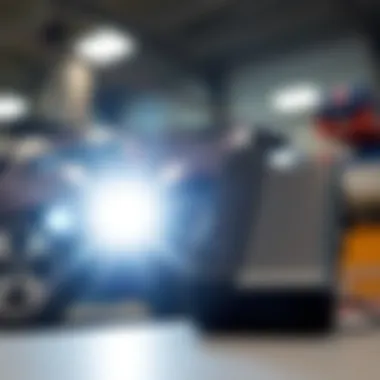
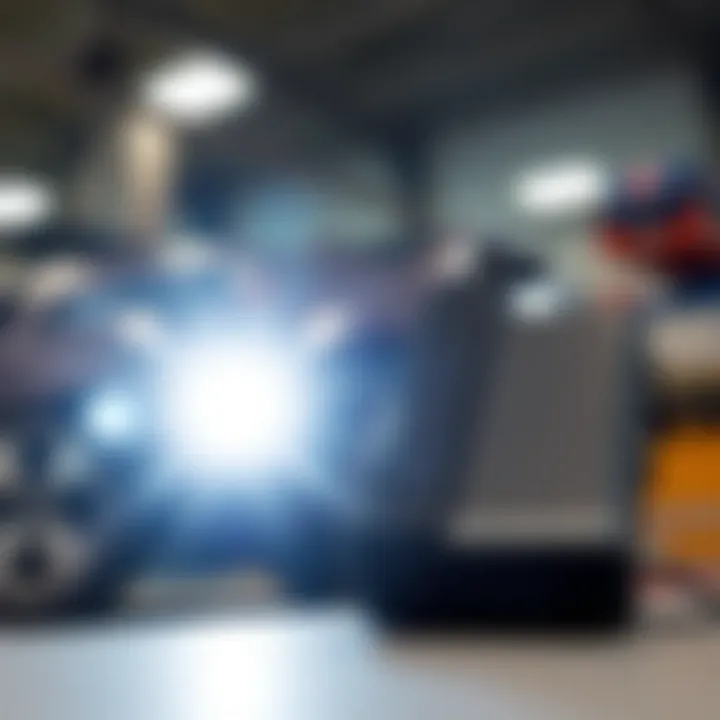
Following a systematic testing procedure can demystify the troubleshooting process. Here’s a pragmatic guide to help you assess the driver side window motor:
- Visual Inspection: Begin with looking for any obvious signs of damage or wear. Check the wiring harness for frays or corrosion, and ensure the motor’s casing is intact.
- Check Fuses: Locate the fuse box (typically under the dashboard or engine bay). Use your multimeter to test the fuses associated with the window motor. Replace any that are blown.
- Power Supply Test: With the vehicle in the ON position, use the multimeter to measure voltage at the window motor’s connector. You should see around 12 volts. If there’s no power, the wiring or switch could be at fault.
- Motor Function Test: If power is present, manually activate the window switch while measuring the voltage at the motor. If the voltage decreases to zero when the switch is pressed, the motor may be faulty.
- Listen for Sounds: Sometimes you can hear the motor engaging or grinding. If it isn’t making any sound, it’s likely a motor failure.
- Remove and Inspect the Motor: If you've ruled out external factors, you may need to remove the motor for further inspection. It could show signs of wear or even a burnt-out winding.
- Reinstallation and Final Testing: After thorough examinations and possible repairs, carefully reinstall and test the window's functionality again.
This step-by-step outline ensures you cover all bases during your diagnostic journey, providing a clear path to potentially rectify issues. It’s often said that a methodical approach yields the best results, especially in automotive troubleshooting.
"A stitch in time saves nine." - Addressing these issues early can prevent larger headaches later.
Following these guidelines not only promotes efficient repairs but also stretches your mechanical understanding of the vehicle, beneficial for future maintenance endeavors.
Repair and Replacement Options
The repair and replacement process for the 2011 Subaru Outback driver side window motor is a crucial aspect for any owner who finds themselves grappling with window functionality issues. Knowing when to roll up your sleeves and dive into repairs—versus hightailing it to the shop for a replacement—can mean the difference between saving a pretty penny or spending extravagantly on repairs that could have been avoided.
Identifying Repairable Components
When tackling issues with the window motor, discerning which components can be mended and which need replacing is paramount. Key components to examine include:
- The Motor Itself: Sometimes the motor may only require a simple fix, like addressing corroded connections or faulty wiring. This is often a good tip-off that a repair is feasible.
- Window Regulator: If the glass is not moving smoothly, the regulator might be the culprit. Inspect for broken parts or misalignment, which can often be adjusted without a full motor replacement.
- Wiring Harness: Frayed wires can signal an electrical issue, which may be repaired rather than replaced entirely. Checking for any visible damage can guide your decision.
Careful attention to these elements can save you time and money, ensuring repairs are done efficiently and cost-effectively.
When to Replace the Motor
Determining when to replace the motor itself is often a bit of a grey area. Several factors can make this decision clearer:
- Consistent Power Failures: If the motor can be heard but the window does not respond, this usually indicates internal faults. At this point, replacement is likely your best bet.
- Excessive Noise: Unusual grinding or whining sounds when attempting to use the window often signal a failing motor. If it sounds worse than nails on a chalkboard, it may be time for a new one.
- Physical Damage: If the motor shows signs of wear or damage—even just from a bump during repairs—it's generally safer to opt for a replacement rather than face future failures.
A good rule of thumb is to weigh the age of the car and the extent of damage. If it's been a product of consistent wear and tear, a new motor could greatly improve overall functionality.
Aftermarket Parts vs. OEM
The debate between using aftermarket parts or sticking with Original Equipment Manufacturer (OEM) options is as old as the hills. Each choice brings its own set of pros and cons:
- Aftermarket Parts:
- OEM Parts:
- Cost-Effective: Typically less expensive than OEM. Perfect for those on a budget.
- Variety: Often come in various brands and specifications, offering options that may not be available in OEM parts.
- Guaranteed Fit: These are designed specifically for the Subaru Outback, ensuring compatibility and reliability.
- Warranty: Usually come with a warranty that may provide peace of mind post-repair.
Ultimately, your choice will depend on your specific situation. If you're patching up a vehicle for a few more years of service, aftermarket might do the job. If you’re looking to maintain long-term value and reliability, leaning towards OEM can be wise.
"The right decision often comes down to balancing budget with quality and future value."
In summary, carefully weighing your options when it comes to repair and replacement can lead to enhanced longevity in the window motor and, consequently, your overall driving experience. Always consider your circumstances; whether tackling repairs yourself or seeking professional guidance, being informed is your best bet.
Maintenance and Care
Maintaining the driver side window motor of the 2011 Subaru Outback is critical for ensuring optimal performance and longevity. This component, like any mechanical part, benefits from routine attention. Neglect can lead to issues ranging from slow operation to total failure of the window system. Regular maintenance not only helps users avoid costly repairs but also enhances the overall driving experience by ensuring windows operate smoothly and efficiently.
Regular Cleaning and Lubrication
One of the cornerstones of maintenance and care involves regular cleaning and lubrication of the window motor and associated components. Dust and grime can build up over time, particularly in the window tracks, causing resistance in movement. To combat this, it's good practice to periodically clean the window tracks with a soft cloth and a gentle cleaner. Ensure that no residue remains that could attract more dirt.
For lubrication, synthetic greases are often recommended for automotive applications. These substances ensure that parts operate with minimal friction, significantly reducing wear over time. Apply lubricant sparingly to the window track and the motor casing. Be careful not to overdo it; excess lubricant can create a mess or even impair functionality.
Regular maintenance can significantly extend the life of your power window system.
Testing Window Functionality
Testing the window functionality is a vital aspect of maintenance that should not be overlooked. It’s essential to ensure that each window operates as expected before any long journeys or seasonal changes. Begin by checking the operation of the window from both the driver’s seat and the individual window switches. Listen for any unusual sounds, such as grinding or whirring, which could indicate mechanical wear.
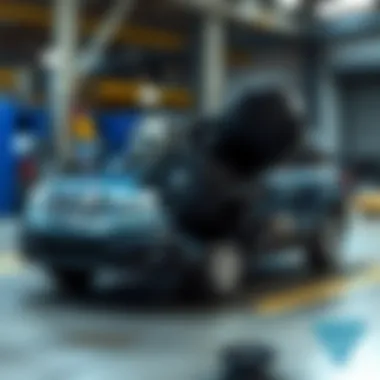
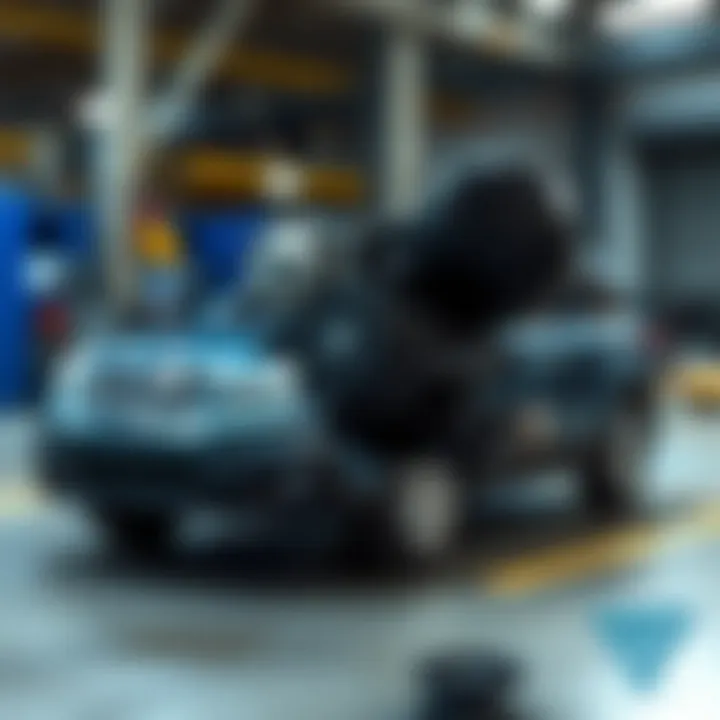
In addition, pay attention to how the window responds to the controls. If it hesitates, struggles, or moves unevenly, these can be signs of a declining motor or regulator. If issues arise, it’s a good idea to refer to technical manuals, or forums like Reddit, that discuss similar concerns.
By incorporating these practices into a regular maintenance schedule, Subaru Outback owners can keep their driver side window motor in top shape, ultimately preserving both functionality and convenience.
Expert Insights and Recommendations
The driver side window motor of the 2011 Subaru Outback might not grab everyone's attention right away, but understanding its intricacies is paramount for both current owners and potential buyers. The electronic components in modern vehicles like this one have revolutionized user experience, but with that advancement comes complexity. An informed perspective on the motor's operation, common issues, and available solutions can save owners both time and money.
Consulting with Professionals
When faced with windows that refuse to move or exhibit unusual sounds, it’s wise to consult with trained professionals who understand the mechanics behind window motors. A knowledgeable mechanic can not only diagnose the profile of the problem accurately but also recommend suitable repair strategies that might not be immediately obvious. Engaging professionals skilled in Subaru’s systems ensures that specific nuances of the Outback model are considered.
- Diagnostic Tools: Technicians often use specialized equipment to pinpoint electrical or mechanical failures. Some common tools include multimeters and oscilloscopes, which help in assessing current flow and detecting intermittent faults in the wiring.
- Professional Experience: Mechanics often have insight into less evident problems, such as wiring earthing issues or misalignment with the window regulator that could impede the motor’s functionality.
- Warranty and Guarantee: Using qualified technicians ensures that parts or repairs are conducted under warranty, bringing peace of mind for the vehicle owner.
In short, while DIY fixes can be tempting, professional assistance often leads to more reliable outcomes, especially when the stakes involve the safety and usability of your vehicle’s windows.
Consumer Reports and Feedback
Checking consumer feedback can be a goldmine when it comes to understanding what to expect, be it triumphs or pitfalls in window motor performance. Platforms like Reddit or automotive review sites often contain firsthand accounts that can shed light on common user experiences.
- Common Complaints: Travelers recount tales of their motors failing unexpectedly, which highlights the importance of being proactive about maintenance.
- Praise for Reliability: In contrast, many owners speak to the longevity of the window motor when proper care is given—like regular lubrication and moisture checks in the window tracks.
- Platform Trustworthiness: Websites such as Consumer Reports can provide detailed analysis and comparisons, helping potential buyers weigh the long-term performance and reliability of Subaru parts against other brands.
"Seek and ye shall find; sometimes consumer reviews can uncover hidden gems or pitfalls not mentioned in polished sales pitches."
Engaging with consumer insights turns the proverbial wheel, helping prospective buyers or current owners make educated decisions. Balancing both professional expertise and user feedback allows for a holistic understanding of any vehicle component, including the often-overlooked driver side window motor.
Future of Power Window Systems
Understanding the future of power window systems, particularly in vehicles like the 2011 Subaru Outback, is crucial, not just for enthusiasts but also for those looking into buying or maintaining vehicles. With the progression of automotive technology, the evolution of window motors reflects broader trends in vehicle design, efficiency, and user experience.
The need for energy efficiency is now at the forefront. As automotive manufacturers respond to environmental concerns and regulations, power window systems are becoming more integrated with the vehicle’s overall electrical architecture. This integration could lead to lighter components and reduced energy consumption, both of which align well with modern consumer preferences for eco-friendliness.
Technological Advances in Window Motors
In recent years, advancements in technology have opened the door to numerous improvements in the design and performance of window motors. These innovations allow for not just smoother operation, but also greater reliability under varied conditions. Some notable developments include:
- Brushless Motor Technology: Unlike traditional brushed motors, brushless motors minimize wear and tear and enhance efficiency. This means longer lifespan and less frequent replacements.
- Smart Window Control: Future systems might leverage sensors to detect obstacles, preventing accidents when closing windows. This predictive feature boosts safety and convenience.
- Mobile Integration: As connectivity becomes a norm, expect window systems to interface with mobile applications, allowing users to control windows remotely.
These advancements underline the increasing importance of power windows not only as functional elements but as components that contribute significantly to the overall vehicle experience.
Industry Trends and Consumer Preferences
Alongside technological changes, shifts in consumer preferences are dictating trends within the power window sector.
Consumers today show growing enthusiasm for features that blend luxury with functionality. Remote-controlled windows and one-touch auto-up/down mechanisms have become highly desirable. Consumers are looking to maximize convenience, aligning with a lifestyle that favors efficiency and ease of use. Furthermore, energy conservation plays a big role in purchasing decisions - thus, the efficiency of power window systems is a selling point.
Moreover, there's a noteworthy preference for quality over sheer cost. Buyers increasingly value durability and performance over merely getting the lowest price. This shift encourages manufacturers to invest in better materials and more robust designs, ensuring that products not only meet but exceed consumer expectations.
To summarize, the future of power window systems revolves around advanced technology and evolving consumer preferences. By understanding these dynamics, stakeholders in the automotive market can adapt proactively, ensuring they stay in step with these notable changes.
The End and Key Takeaways
In a world driven by technology, understanding automotive components such as the driver side window motor in the 2011 Subaru Outback can be a game-changer for many vehicle owners. This article has ventured through the intricacies of how this specific motor operates, its significance, and the common issues that may arise. The conclusion serves to encapsulate these insights and underscore the importance of knowing when to act, whether it is for maintenance or repair.
Summarizing Key Insights
To summarize, several key elements emerged throughout the discussion on the driver side window motor. The power window system is no longer just a luxury; it is rather an integral part of the vehicle's functionality. The motor’s basic function revolves around converting electrical energy into mechanical power, enabling the window to move up and down. Here are the main takeaways:
- Functionality: The driver side window motor is essential for the operation of power windows, providing convenience and safety.
- Common Failures: Indicators of motor failure include inconsistent movement, slow operation, or complete unresponsiveness. Recognizing these symptoms early can save time and repair costs.
- Maintenance Tips: Cleaning and lubing the window tracks periodically can prevent wear and extend the life of the window motor.
- Informed Decisions: Choosing between OEM and aftermarket parts requires careful consideration of warranty, compatibility, and reliability.
Ultimately, being proactive about the maintenance and repair of the window motor can enhance the longevity and performance of the overall vehicle, ensuring a seamless driving experience.
Importance of Informed Decision-Making
Knowing how to make informed decisions related to the driver side window motor is crucial for several reasons:
- Cost-Effectiveness: An informed owner is more likely to opt for preventive measures rather than wait for expensive repairs down the line.
- Safety Considerations: Adequate knowledge about the window system ensures that drivers can recognize and address any malfunction that poses a safety hazard.
- Performance Reliability: Understanding the parts involved means better choices regarding repairs or replacements which can improve overall vehicle functionality.
- Resale Value: A well-maintained power window system can positively impact the vehicle's resale value, as potential buyers notice the attention to detail in upkeep.















